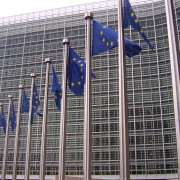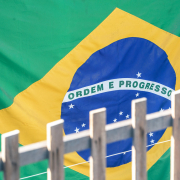On Monday evening, the White House announced that it would be imposing new trade tariffs on $200bn worth of Chinese imports, as the US-China trade war heats up.
Coming into effect on 24 September, the US will impose a 10% trade tariff on some Chinese goods until the end of the year, amounting to around 40% of goods China exports to the country. As of January 2019, this will increase to 25% if Beijing and Washington fail to reach a deal.
In total, around 5,000 Chinese products will be affected, meaning very few goods would be spared from the heightened tariffs.
Which pesticide products will be affected?
The pesticide products to be affected include the following:
● Aromatic herbicides of nitrile function compounds, nesoi.
● Herbicides, antisprouting products and plant growth regulators, aromatic or modified aromatic, for retail sale.
● Herbicides containing any aromatic or modified aromatic herbicide, antisprouting agent or plant growth regulator, nesoi.
● Herbicides, antisprouting products and plant growth regulators, nesoi, containing an inorganic substance, for retail sale.
● Herbicides, antisprouting products and plant growth regulators nesoi, put up for retail sale.
● Insecticides containing any aromatic or modified aromatic insecticide, nesoi.
● Insecticides, nesoi, containing an inorganic substance, put up for retail sale.
● Insecticides, nesoi, for retail sale or as preparations or articles.
● Mixtures of dinocap and application adjuvants.
● Fungicides containing any aromatic or modified aromatic fungicide, nesoi.
● Maneb; zinab; mancozeb; and metiram.
● Fungicides containing any fungicide which is a thioamide, thiocarbamate, dithio carbamate, thiuram or isothiocyanate, nesoi.
● Fungicides, nesoi, containing an inorganic substance, put up for retail sale.
● Fungicides nesoi, put up in forms or packing for retail sale or as preparations or articles.
● Rodenticides containing any aromatic or modified aromatic pesticide, nesoi.
● Rodenticides containing an inorganic substance.
● Pesticides derived from halogenated derivatives of aromatic hydrocarbons.
● Aromatic pesticides of esters of other inorganic acids (excluding hydrogen halides), their salts and their derivatives.
● Aromatic ureines and their derivatives pesticides, nesoi.
● Other cyclic amides used as pesticides.
● Other aromatic nitrile‐function pesticides.
● Aromatic pesticides of thiocarbamates and dithiocarbamates.
● Other non‐aromatic thiocarbamates and dithiocarbamates.
● Aromatic pesticides of organo‐sulfur compounds, nesoi.
● O,O‐Dimethyl‐S‐methylcarbamoylmethyl phosphorodithioate; and malathion.
● Other non‐aromatic organo‐sulfur compounds used as pesticides.
● Aromatic pesticides of heterocyclic compounds with oxygen hetero‐atom(s) only, nesoi.
● Aromatic or modified aromatic pesticides containing an unfused pyrazole ring (whether or not hydrogenated) in the structure.
● Pesticides containing a benzothiazole ring‐system, not further fused.
● Pesticides containing any aromatic or modified aromatic, not exceeding 300g, specified in note 2 to chapter 38.
● Pesticides containing any aromatic or modified aromatic, >300g but <7.5kg, specified in note 2 to chapter 38.
● Pesticides, nesoi , >300g but <7.5kg, specified in note 2 to chapter 38.
● Pesticides containing any aromatic or modified aromatic, >7.5kg, specified in note 2 to chapter 38.
● Pesticides, nesoi , >7.5kg, specified in note 2 to chapter 38.
The US has warned that a retaliation from China would result in further tariffs on $267bn worth of additional goods. However, the East Asian country has already reacted by announcing tariffs of up to 10% on $60bn of US goods. In a statement, the Chinese government says this was a “forced response”.
This is the latest escalation in the ongoing trade war between the two countries. The US has already levied tariffs of 25% on $50bn worth of Chinese goods, which China responded with tariffs on American goods also worth $50bn.
In a statement, President Donald Trump explained that the reason behind the tariffs was “unfair policies” on China’s part:
“China is engaged in numerous unfair policies and practices relating to United States technology and intellectual property – such as forcing United States companies to transfer technology to Chinese counterparts. These practices plainly constitute a grave threat to the long-term health and prosperity of the United States economy.”
The reasons behind Trump’s aggressive trade policy is to reduce the trade deficit that currently exists between the US and China and thus boost US industry. Other countries have been affected by Trump’s increasingly protectionist trade policies, after Washington announces tariffs on all imports of steel and aluminium, including metals from China, in March.
The two countries have been in talks over a new trade agreement, but as of yet have failed to reach a deal.
Source: www.agropages.com


